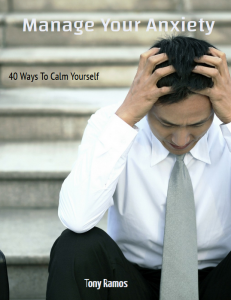
Teens, Screens, and Mental Health
Julia Viniczay/Unsplash
Dove has recently released a compelling three-minute video called “Cost of Beauty: A Dove Story,” which blames toxic social media for harming the mental health of 3 in 5 kids. It shows a young girl named Mary growing from toddlerhood to 12, when she receives a smartphone as a birthday gift. As the sweet, playful child uses her phone, she becomes obsessed with her appearance and her weight.
Over time, Mary becomes seriously ill and is hospitalized with what appears to be anorexia. The video finishes with Mary, now in recovery, followed by shots of several other real-life survivors of mental health issues.
Keep It in Perspective: Toxic Social Media Is Not the Biggest Problem
The goal of Dove’s campaign is to support legislation compelling social media platforms to mitigate harm to children and adolescents. While that is an immensely worthwhile goal, it risks focusing our attention on a relatively small factor in the serious decline in adolescent mental health, and thereby ignoring the larger factors.
For most kids growing up in poverty in crowded and dangerous conditions, with poor educational opportunities and little access to mental health supports, toxic social media might push them over the top, but it isn’t the biggest reason for any problems they might have. Dan Keating argues that psychologists need to recognize the situation as a “stress pandemic” with many root causes, and work not only to support kids in coping, but also to reduce the terrible overload of stressors too many kids are dealing with. If we care about young people’s mental health, we need to pay attention to the larger problems they’re worried about, like social injustice, environmental degradation, and gun violence,
Maybe Social Media Isn’t the Biggest Problem, But That Doesn’t Mean It Isn’t a Problem
The Dove campaign is grounded in fact: social media can entice a young person into over-focusing on their appearance, and developing a negative self-image that leads to attitudes and practices that damage their mental health. Social media makes it almost impossible for teenagers to resist harmful comparisons to others’ appearance, possessions, activities, and popularity.
In early and middle adolescence (11-16), social media can override kids’ judgment. Their brains are developing, and they don’t yet have the maturity to resist harmful peer influences. If a cruel post gets lots of likes, your child—who’s normally kind and thoughtful—can join in, inadvertently participating in a bullying exercise that can have serious real-world consequences for the victim. Alternatively, they can find themselves the innocent victim of negative online attention and be too embarrassed to talk about it. This can deteriorate into serious mental health concerns.
And it’s not only the toxic content we need to worry about. When technology gets out of balance, kids can squander opportunities for authentic connection and relationship-building. They can shortchange other activities that promote their health and well-being. It can distract their attention from what matters most in their lives.
Technology Does Have Benefits
All that being said, when technology is used mindfully, it has many benefits. It can provide needed breaks for busy kids. Young people can learn to use social media in positive ways to initiate, develop, and maintain meaningful social connections that increase their confidence and resilience.
Kids can find online learning opportunities that expand their sense of possibility, and support the development of their interests. This can be especially important for kids who feel different than others or are marginalized, as well as kids with special learning needs, whether learning problems or giftedness.
What to Do About the Problem #1: Be a Good Role Model
Kids whose parents spend a lot of time on their devices are more negative than other kids, and less resilient. Starting in infancy, children express more distress and are less likely to explore their environments when their mothers are using their devices. This can lead to emotional disorders as time goes by.
Adolescence Essential Reads
So, do your best to keep your phone use to a minimum when you’re with your child. A child who feels seen and heard and valued is more confident and resilient, and a lot less likely to go down the technological rabbit hole that leads to trouble.
What to Do About It #2. Teach Your Child to Use Screens Mindfully
Help your child learn to distinguish between online activities that are useful or beneficial and those that waste their time or worse.
Disable location settings. Restrict your young person’s online access, and if your child is under 12, don’t allow unsupervised time online. Encourage screen use in the kitchen and living room, and other places where family members are present. Restrict bedroom use, especially for the hour before bedtime and through the night.
Teach positive online behavior. Help your child learn how to be responsible, positive, and supportive online, just like in the real world.
And also, be flexible. Each child and each teenager has their own unique personality, needs, and preferences, and these change over time. Your family’s technology rules should respond to changing demands and situations.
What to Do About It #3. Support a Balance of Healthy Activities
A healthy life balance is one of the best ways to support your child’s mental health as they approach and travel through adolescence. A balanced life can counteract the harmful effects of toxic social media. Sleep matters, and so does nutrition. Encourage your child to spend time in nature; to engage with friends, family, and extended family; and to get involved in community activities. It’s also important to help them find opportunities for creative self-expression.
What to Do About It #4. Creative Problem-Solving
Talk with your child about ways to help other kids use social media mindfully and supportively. They might enjoy working with a few friends or the rest of their class on designing an anti-bullying campaign for the school, or on a positive body image campaign for the younger kids in the school. There’s no better way to encourage mindful decision-making than to teach it to others.
And once your child gets a taste of making a difference in their community on social media concerns, they may want to get involved in the bigger issues affecting our communities and the planet.
Social media can be toxic, and it is important to be alert to its dangers. But don’t get it out of perspective or feel helpless against it. There are many ways you can combat its harms within your family and your community.






